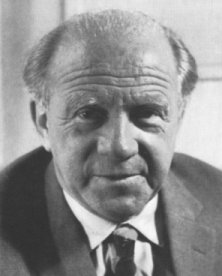




| He/She | Who is he/she? |
|---|---|
| This Danish born scientist built the most recognized yet inaccurate model of the hydrogen atom. He founded the modern quantum theory of matter and worked under Ernest Rutherford in Manchester, England. In 1939 he was elected president of the Royal Danish Academy of Science and Letters. He also helped in the British-American atomic bomb project at Los Alamos. |
 |
| Formerly, he received only a primary education yet he develped the modern theory of electromagnetic fields. Beyond his success in the then theoretical branch of physics, this gentleman created a series of lectures aimed at children. Those lectures discussed "The Chemical History of a Candle." |
 |
| Though initially uninterested, Niels Bohr conviced him to pursue research in quantum theory. During the Nazi reign in Germany, he became the director of the Kaiser Wilhelm Institute. He headed the Germany nuclear arms project. However, he didn't focus solely on physics. He extended his mind into philosophy. |
 |
| His credentials extend into the heart of mathematical representations. He developed calculus. What we recogonize as derivatives, he labeled fluxions. What we call integral, he apropriately chose inverse fluxions. The notation familiar to many mechanical engineers, the "dot" notation representing derivatives, was created by this gentleman. Beyond math, he pioneered representing light as a particle. |
 |
| His given name is John William Strutt. Strutt, however, was so stricken with disease, that he was not expected to live past his youth. Fortunately, he lived long enough to build a substantial reputation. He spent six years of his life as the President of a government committe on explosives, was once a Chancellor of Cambridge University and became a Justice of the Peace. |
 |
|
Bohr, Niels (1885-1962) Danish physicist in full Niels Henrik David Bohr He was the first to apply the quantum theory, which restricts the energy of a system to certain discrete values, to the problem of atomic and molecular structure. For this work he received the Nobel Prize for Physics in 1922. He developed the so-called Bohr theory of the atom and liquid model of the atomic nucleus. |
|
Faraday, Michael (1791-1867) English physicist His many experiments contributed greatly to the understanding of electromagnetism. |
|
Heisenberg, Werner (1901-1976) German physicist in full Werner Karl Heisenberg He discovered a way to formulate quantum mechanics in terms of matrices (1925). For that discovery, he was awarded the Nobel Prize for Physics for 1932. In 1927 he published his indeterminacy, or uncertainty, principle, upon which he built his philosophy and for which he is best known. He also made important contributions to the theories of the hydrodynamics of turbulence, the atomic nucleus, ferromagnetism, cosmic rays, and elementary particles, and he planned the first post-World War II German nuclear reactor, at Karlsruhe, then in West Germany. |
|
Newton, Sir Isaac (1642-1727) English physicist He was the culminating figure of the scientific revolution of the 17th century. In optics, his discovery of the composition of white light integrated the phenomena of colours into the science of light and laid the foundation for modern physical optics. In mechanics, his three laws of motion, the basic principles of modern physics, resulted in the formulation of the law of universal gravitation. In mathematics, he was the original discoverer of the infinitesimal calculus. Newton's Philosophiae Naturalis Principia Mathematica (Mathematical Principles of Natural Philosophy), 1687, was one of the most important single works in the history of modern science. |
|
Rayleigh, Lord (1842-1919) English physicist He made fundamental discoveries in the fields of acoustics and optics that are basic to the theory of wave propagation in fluids. He received the Nobel Prize for Physics in 1904 for his successful isolation of argon, an inert atmospheric gas. |